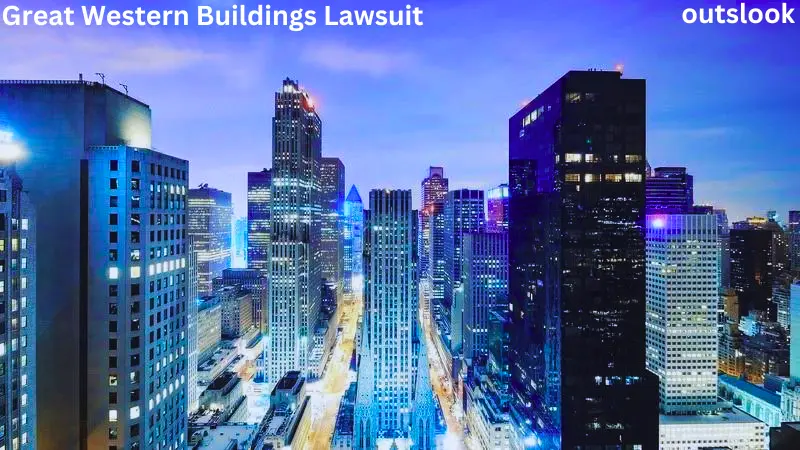The Great Western Buildings lawsuit, a landmark legal case, has garnered significant attention in recent years, becoming a focal point for discussions around construction standards, corporate responsibility, and consumer rights. This comprehensive overview delves into the intricacies of the lawsuit, examining its implications for the construction industry and legal precedents.
Great Western Buildings Lawsuit Introduction
The Great Western Buildings lawsuit emerged as a pivotal legal battle in the construction and real estate sectors. Stemming from numerous complaints about the safety and quality of buildings constructed by Great Western Buildings, a prominent construction firm, the lawsuit highlights critical issues in building standards and corporate accountability. This case has affected the parties involved and set a precedent that resonates across the industry.
Background of the Case
Significant Western Buildings, known for its rapid construction projects across urban and suburban areas, faced backlash when several of its buildings were found to have important structural and safety issues. These problems included poor material quality, code violations, and design flaws, leading to a heightened risk for residents and users of these buildings.
The Plaintiffs
The plaintiffs in this case comprised a diverse group, including individual homeowners, tenant associations, and commercial entities. They alleged that Great Western Buildings Lawsuit had compromised construction quality, leading to hazardous living and working conditions.
The Defendants
Significant Western Buildings and several subcontractors and suppliers were the primary defendants. The lawsuit alleged that these parties collectively contributed to the substandard construction of the buildings.
Legal Grounds of the Lawsuit
- The lawsuit was based on multiple legal grounds, including:
- Breach of Contract: Plaintiffs argued that Great Western Buildings failed to deliver the quality and safety promised in their contracts.
- Negligence: The lawsuit claimed that the company neglected standard construction practices, leading to unsafe buildings.
- False Advertising: Accusations were made that the company misrepresented the quality of its constructions in marketing materials.
- Violation of Building Codes: The buildings were alleged to have numerous code violations, posing risks to occupants.
The Proceedings
Initial Filings
The lawsuit began with a series of filings by the plaintiffs detailing the alleged shortcomings of Great Western Buildings Lawsuit. These filings included expert testimonies, building inspection reports, and personal accounts from affected individuals.
The Defense
Great Western Buildings’ defense hinged on challenging the claims of substandard construction and arguing that any issues were minor and not systemic. They also pointed to external factors, such as maintenance issues and natural wear and tear, as causes for the problems.
Key Developments
- Expert Testimonies: Experts in construction and engineering were brought in, providing critical insights into the alleged construction flaws.
- Documentary Evidence: Internal documents from Great Western Buildings were presented, shedding light on company practices and decision-making processes.
- Settlement Negotiations: There were attempts at negotiating a settlement at various stages, though these were initially unsuccessful.
Impact of the Lawsuit
In the Construction Industry
The lawsuit highlighted significant concerns about construction practices, prompting industry-wide discussions on quality and safety standards. It also led to increased scrutiny of building codes and their enforcement.
Legal Precedents
This case set important legal precedents, particularly in how construction companies are held accountable for their work and the extent to which they can be liable for safety issues.
Regulatory Changes
In response to the lawsuit, there were calls for stricter regulations and oversight in the construction.
Industry. This led to reevaluating building codes and pushing for more rigorous enforcement mechanisms.
Public Awareness
The case significantly raised public awareness about construction quality and safety. Homebuyers and tenants became more vigilant about the standards of their living and working spaces, leading to a more informed consumer base.
The Verdict and Its Aftermath
The Court’s Decision
After a lengthy legal battle, the court found Great Western Buildings Lawsuit liable on several counts, including negligence and breach of contract. This verdict was a landmark decision, emphasizing the responsibility of construction firms for the safety and quality of their buildings.
Compensation and Penalties
The court ordered Great Western Buildings to pay substantial damages to the plaintiffs. These included compensation for repairs, relocation expenses for displaced residents, and punitive damages to deter similar negligence in the future.
Great Western Buildings Lawsuit’ Response
In response to the verdict, Great Western Buildings Lawsuit undertook a significant overhaul of its operations. This included implementing stricter quality control measures, retraining staff, and revising its subcontractor policies.
Industry Response
The construction industry at large responded by tightening standards. Many companies voluntarily adopted more stringent quality assurance processes, and industry associations began advocating for better construction practices.
Long-Term Implications
For the Construction Industry
The lawsuit had a lasting impact on the construction industry, fostering a culture emphasizing quality and safety. It also led to more collaborative efforts between industry players, regulatory bodies, and consumer groups to ensure higher standards.
For Legal Frameworks
Legally, the case became a reference point for future construction-related lawsuits. It clarified the extent of liability for construction firms and set a precedent for how negligence and breach of contract in this sector are adjudicated.
For Consumer Protection
The case strengthened consumer protection laws related to real estate and construction. It highlighted the need for clear and enforceable contracts, transparent marketing, and robust consumer legal recourse.
Conclusion
The Great Western Buildings lawsuit is a crucial case study in the intersection of construction, law, and consumer rights. It underscores the importance of maintaining high standards in building construction and the legal responsibilities of firms in the industry. The case had far-reaching consequences, leading to improved safety standards, heightened public awareness, and significant legal and regulatory changes. As the construction industry continues to evolve,
the lessons learned from this lawsuit will undoubtedly continue to influence practices and policies, ensuring better consumer protection and more accountability for construction companies.

